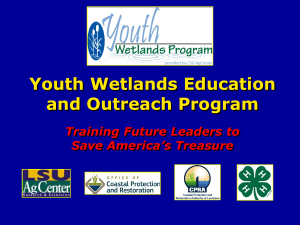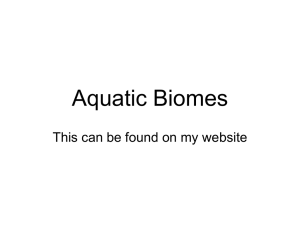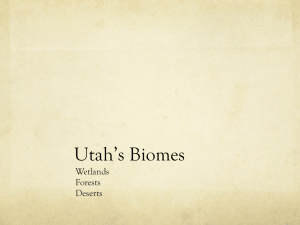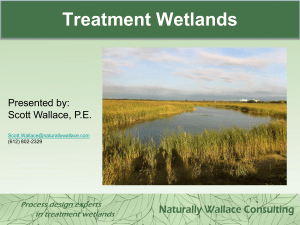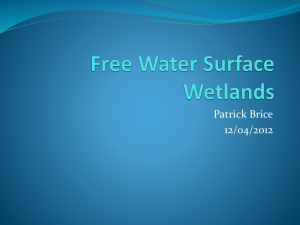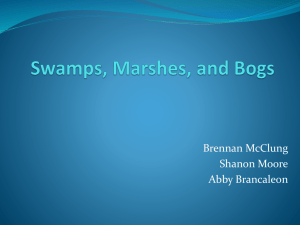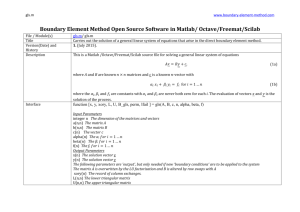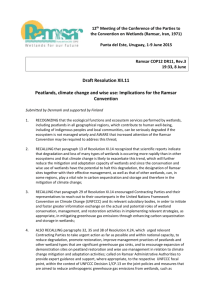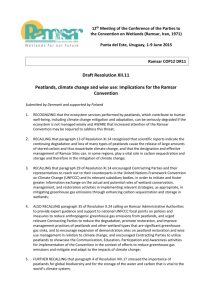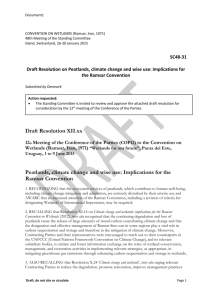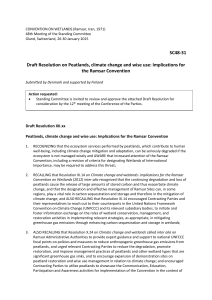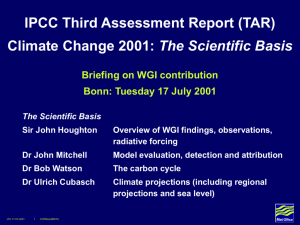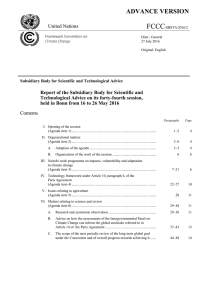IPCC Expert Meeting on HWP, Wetlands and Soil N2O
advertisement
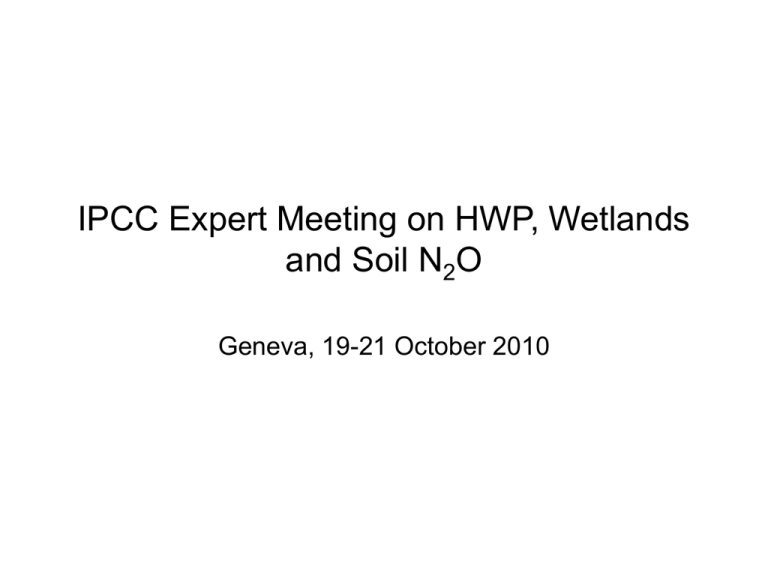
IPCC Expert Meeting on HWP, Wetlands and Soil N2O Geneva, 19-21 October 2010 IPCC: Intergovernmental Panel on Climate Change: independent of the UNFCCC Meeting by the Task Force on National Greenhouse Gas Inventories (TFI) Background: UNFCCC SBSTA 32 (June 2010) The SBSTA* invited the IPCC to organize an expert meeting to explore the need and ways to clarify methodological issues related to reporting on harvested wood products, wetlands and nitrous oxide emissions from soils, as specified in annex III. *Subsidiary Body for Scientific and Technological Advice of the UNFCCC Background: UNFCCC SBSTA 32 (June 2010) The SBSTA also invited the IPCC to provide information on the recommendations of this expert meeting for the second workshop* of the work programme, and a report of the expert meeting for consideration by the SBSTA at ist 33rd session**, with a view to the SBSTA at its 33rd session considering the need for and scope of an invitation to the IPCC to conduct further work in these areas *Bonn, 3-4 November **Cancun Annex III The expert meeting … should explore the need and ways to clarify, improve and provide updated information, as appropriate, related to, inter alia: a) Information on Chapter 7 on wetlands, in particular the methodological guidance in those areas for which gaps are identified in table 7.1 … and gaps related to some uses of wetlands which are currently not fully covered, for example the rewetting of previously drained wetlands or wetland restoration Peatlands in 2006 Guidelines • croplands on organic soil (incl. Cranberries and other ericaceous fruits) (V 4 Ch 5.3) • managed grasslands on organic soil (V 4 Ch 6.3) • managed, including drained or undrained forested wetlands according to national definitions (V 4 Ch 4.3) • peatlands cleared and drained for production of peat for energy, horticultural and other uses (V 4 Ch 7.2) Aims of the meeting • Can/should guidance in the 2006 GLs be updated? • Is there more info on EFs (defaults or EFDB) • Can guidance be given on rewetting? BOG of ~15 people BOG meetings • main focus on peatlands • guidance gaps in other wetlands identified: – waste water treatment – coastal wetlands (salt marshes, mangroves) – reservoirs • small bog within BOG on flooded lands (reservoirs) BOG meetings: stratification Science can provide guidance stratified according to: • gas species: CO2, CH4, N2O • climate zones: boreal, temperate, tropical • peatland types: bog vs fen (poor vs rich) • drained vs undrained (wet) – wet vs flooded (?) – rewetting vs restoration (?) • LU: forested lands, croplands, grasslands, extraction • LUC: from FL, CL, GL, WL to wet (?) BOG meetings: additional topics Additional topics of peatland GHGs were identified as currently lacking enough scientific support to provide general Tier 1 guidance: • peatland fires • DOC/DIC/POC fluxes* • ditches* • stockpiles* • transient dynamics *may for Tier 1 be assumed covered by default EF Co-chairs summary On Wetlands (1): The Wetland chapter of the 2006 IPCC GLs identifies gaps which could not be filled at the time… These include rewetting of peat lands and wetland restoration (…). It should be remembered that drainage and conversion of wetlands to other land uses is included in other chapters of volume 4 (e.g. forest land, cropland and grassland); coherence between these chapters and the wetland chapter should be maintained. Co-chairs summary On Wetlands (2): Since the 2006 IPCC GLs were completed much new scientific information is now available about various wetlands that enable emissions and removals to be estimated from wetland restoration and rewetting, especially for peatlands. The meeting recommended that the IPCC provide additional methodological guidance for the rewetting and restoration of peatlands; emissions from fires, ditches and waterborne carbon; and constructed wetlands for waste water disposal, to fill gaps in the existing guidance. Co-chairs summary On Wetlands (3): The meeting also noted that there are now a large number of new EF measurements and other information available across climate zones for wetlands and drainage. The meeting recommended that an expert meeting be held to assess these data and develop emission factors from this information to enable more country- and region-specific estimates to be made. The meeting also recommended that the TFI actively collect such data and add it to the EFDB. The way forward Co-chairs summary has been reported to • The UNFCCC workshop on the UNFCCC Reporting GLs for Annex I Parties 3 – 4 Nov. In Bonn • SBSTA 33 in Cancun The way forward SBSTA may request IPCC to start the process to revise the GLs (Dec. 2010) IPCC-Panel to accept this task in May 2011 and convene a Scoping Meeting 2nd half of 2011 IPCC-Panel to accept this scope in Dec 2011 IPCC-TFI can then start the process of 4 (?) author meetings and 2 review rounds The way forward Process will take 2 to 2½ years New GLs will not be available before the start of the 2nd Commitment Period (2013-2018) New GLs will be in time for reporting (first report 2015) New GLs might not be in time for accounting (Art. 5.2 KP)… The way forward IPCC-TFI will push the topic by organising an ad hoc expert meeting (~60 experts) before the May 2011 Panel meeting: • collate info, identify gaps in info • define activity • GLs/Meths for drainage (already there) & for rewetting • Activity data • EFs (update/develop) • stratification Very slight possibility Panel accepts outcome as scope


